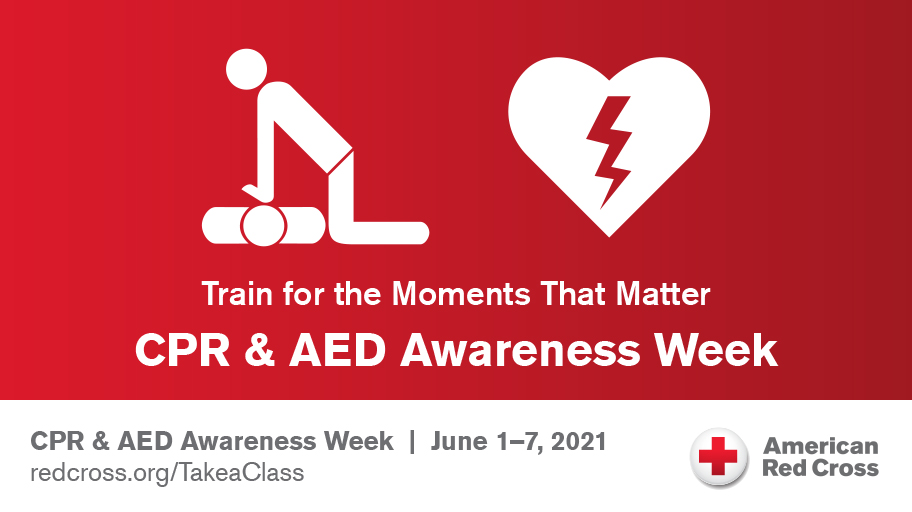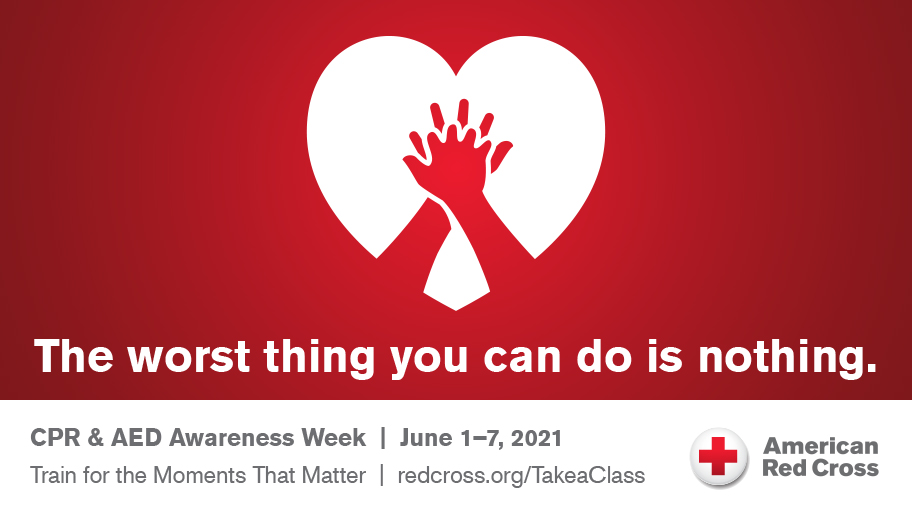Consider taking a class this CPR and AED Awareness Week
By Tim Poe, American Red Cross volunteer
In the U.S., over 350,000 people suffer cardiac arrest outside of hospitals each year. Many of the roughly 10% who survive do so because someone performed CPR or used an automated external defibrillator (AED) within the first few minutes. Since the first week of June is National CPR and AED Awareness Week, we urge you to consider learning these lifesaving skills.

CPR and AEDs are effective, especially when performed by a bystander before emergency medical personnel can arrive. The Centers for Disease Control and Prevention (CDC) states that, if performed in the first few minutes of cardiac arrest, CPR can double or triple a person’s chance of survival.
Similarly, the National Institutes of Health (NIH) found that a bystander using an AED increased the likelihood of survival to 67% whereas waiting for EMS to shock the heart only had a 43% survival rate. The NIH also found survival with minimal disability is much greater when a bystander used an AED (57%, versus 33% when initiated by EMS). The NIH estimates 1,700 lives are saved in the U.S .each year by bystanders using an AED.
I spoke with Philip Coffin, American Red Cross instructor manager for our region, who has over 35 years of experience, 20 of them with the Red Cross. Philip spoke of the importance of acting quickly during a cardiac arrest. He said responding within the first four minutes is critical, as the odds of survival dramatically decrease after that. Every minute you lose, he said, the lower your chances of making it back.
Philip spoke especially highly of AED devices. As cardiac arrests are usually electric events, he said, it takes a shock to restart the heart, which an AED provides. In such cases, CPR keeps the brain alive until the shock can be administered.
CPR/AED training is vitally important, then, and the Red Cross excels at providing it, even during the COVID-19 pandemic. Philip said he is deeply proud of his team, who stuck it out, understood they were providing a mission-critical service, and continued training frontline workers.

If interested, CPR, AED, and first aid training and certification courses are available. Many are tailored to the needs of workplace responders, professional rescuers, school staff, healthcare providers, and the public. Several courses are OSHA compliant.
To ensure safety during the pandemic, some classes are in instructor-led classroom settings following health guidelines, while others offer a blend of online training with an in-class skills session. New, innovative ideas are also in development.
Visit this link for more information on hands-only CPR, and click this link to take a CPR class. If you would like to take an AED class, please see here. If your organization would like to purchase an AED, please click here. The Red Cross also offers free apps.
If you see someone collapse without warning, take these steps:
- Call 9-1-1
- Start CPR
- Use an AED
Edited by Glenda Bogar, American Red Cross volunteer

